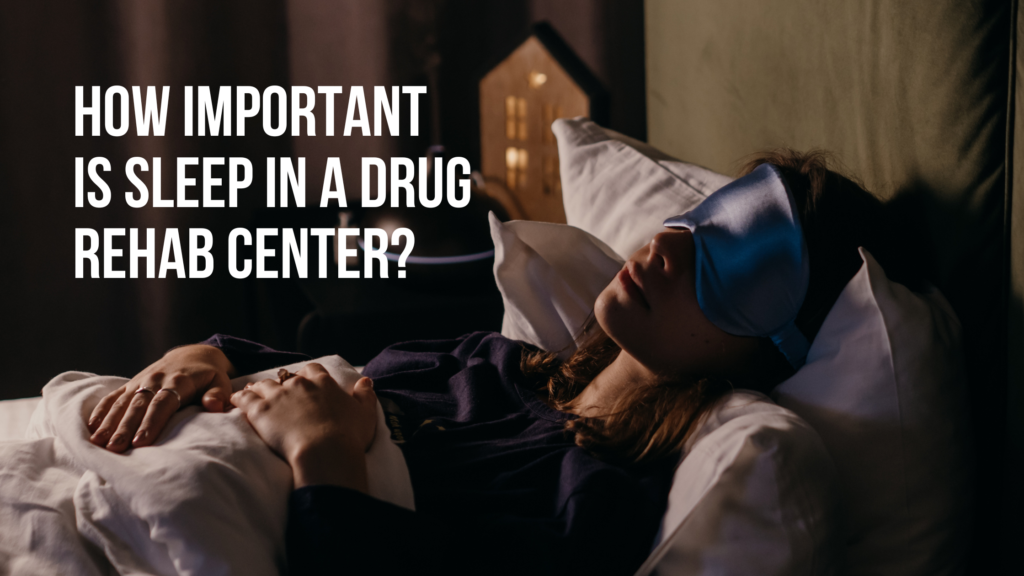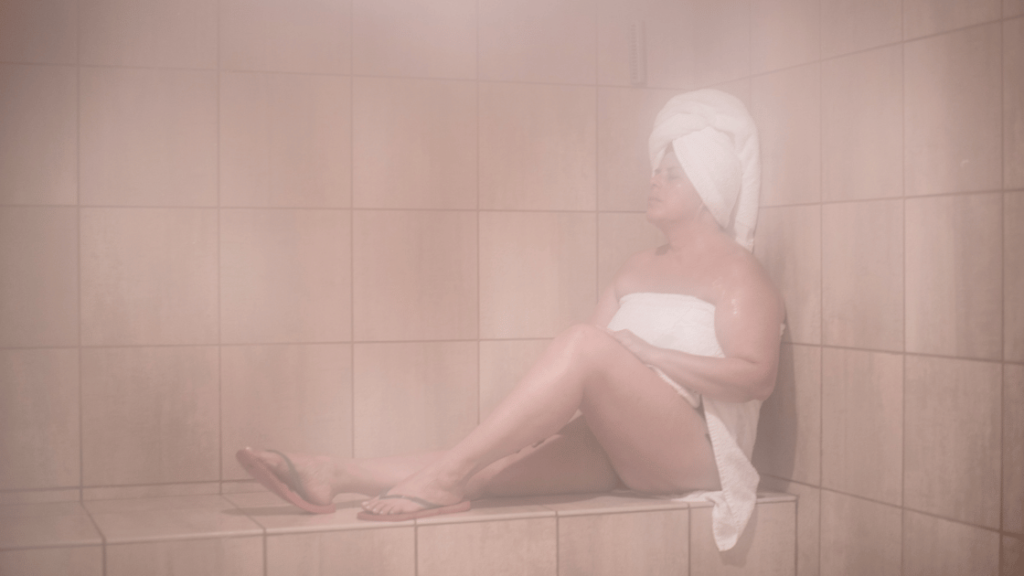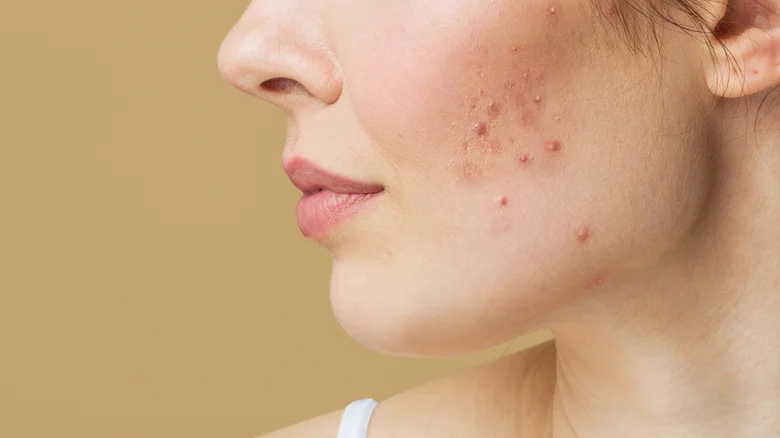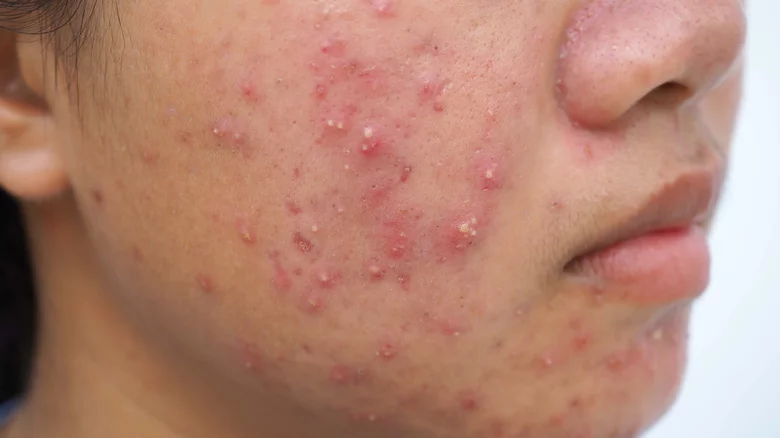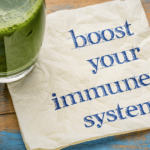Acne 101: Understanding Types, Causes, and Effective Treatments

Acne is a common skin condition that affects people of all ages, from teenagers to adults. It is characterized by symptoms such as whiteheads, blackheads, pimples, oily skin, and scarring. In this article, we will explore the different types and causes of acne, discuss its risk factors and complications, delve into various treatment options including over-the-counter remedies and medical interventions, and provide tips for prevention and self-care based on scientific research.
Key Takeaway: Understanding acne is crucial for effective management. We will cover the impact of acne on skin health and overall well-being throughout this comprehensive guide.
Understanding Acne
Acne is a common skin condition that can affect people of all ages. It’s important to know about the different types of acne and what causes them so you can find the best way to treat and prevent breakouts.
1. Types of Acne
Here are the main types of acne:
- Fungal Acne: This type of acne is caused by an overgrowth of yeast in the hair follicles. It looks like regular acne but is actually a fungal infection. Fungal acne usually needs antifungal treatments to clear up.
- Cystic Acne: Cystic acne is the most severe type of acne. It forms deep under the skin and can be very painful. Cystic acne often leaves scars and usually needs medical treatment.
- Hormonal Acne: Hormonal changes can cause this type of acne. It’s common during puberty, menstruation, pregnancy, or menopause. Hormonal acne usually appears on the jawline and chin and may come with other symptoms like irregular periods or mood swings.

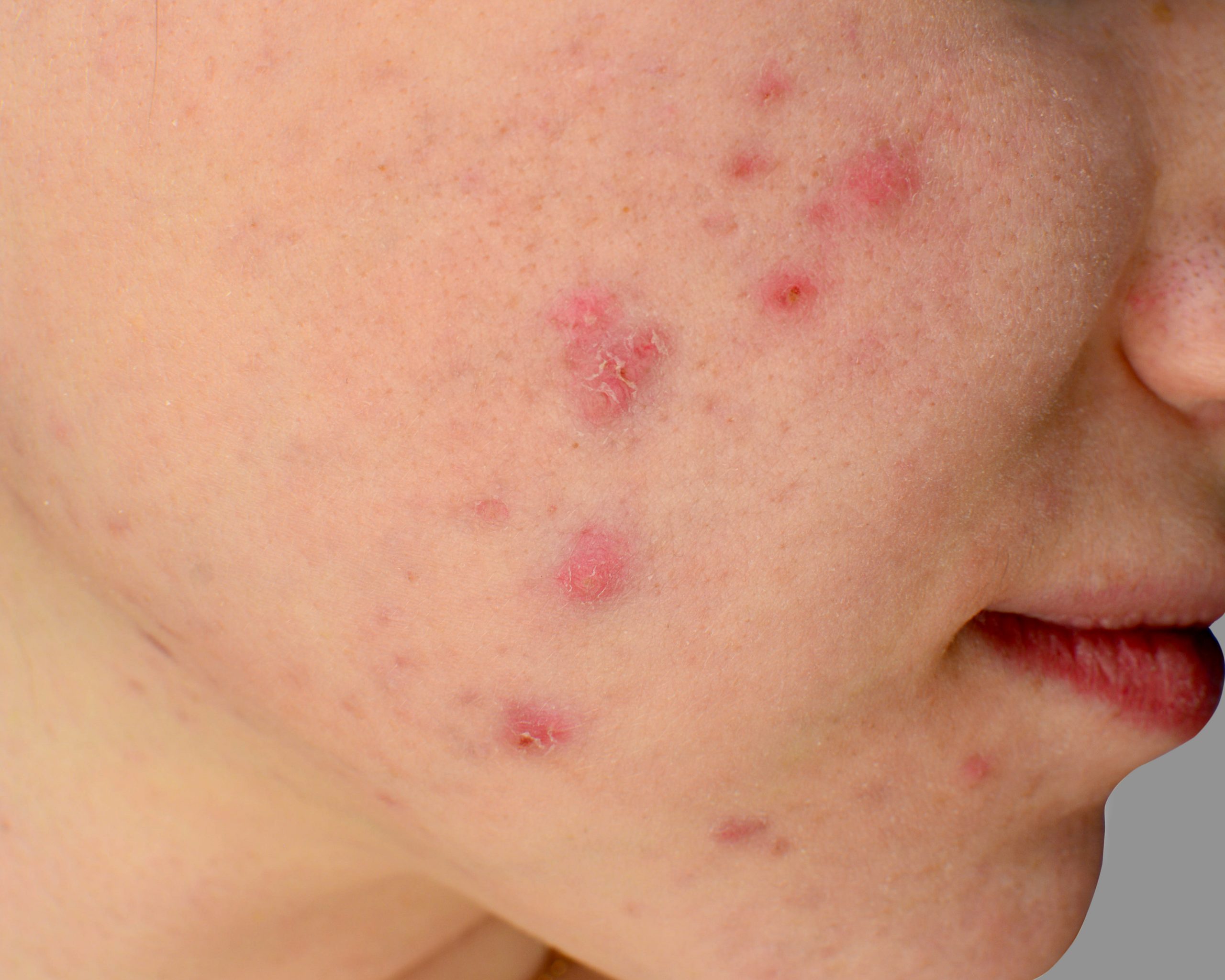
- Nodular Acne: Nodular acne consists of big, hard bumps under the skin. These nodules can be quite painful and take a long time to go away. Over-the-counter treatments don’t always work for nodular acne, so seeing a doctor may be necessary.
Knowing which type of acne you have is important because each type may need a different treatment approach. Mild acne can often be managed with over-the-counter products, but more severe acne may require prescription medications or other medical interventions.
It’s also possible to have multiple types of acne at the same time. For example, someone might have hormonal acne on their jawline and cystic acne on their forehead. This is why it’s a good idea to see a dermatologist who can diagnose your specific type of acne and recommend the best treatment plan for you.
Understanding the causes of acne will give you a better idea of why certain types of acne develop and how they can be treated effectively. In the next section, we’ll look at the primary causes of acne and how they contribute to different types of breakouts.
2. Causes of Acne
In order to effectively manage acne, it is important to understand its various manifestations and what leads to their development. Acne can be attributed to a combination of factors, including excess oil production, clogged hair follicles, bacterial activity, and hormonal fluctuations. Let’s explore each of these causes in more detail:
1. Excess Oil Production
- One of the primary causes of acne is the overproduction of sebum, an oily substance that helps keep the skin moisturized. However, when too much sebum is produced, it can mix with dead skin cells and clog the pores, leading to the formation of whiteheads or blackheads.
- Hormonal changes during puberty, menstruation, or pregnancy can trigger an increase in oil production, making teenagers and women more prone to developing acne during these times.
2. Clogged Hair Follicles
- Hair follicles are tiny sacs in the skin that contain hair and sebaceous glands. When these follicles become clogged with oil, dead skin cells, and bacteria, they can become inflamed and result in different types of acne.
- Fungal acne occurs when yeast (specifically Malassezia) builds up in the hair follicles, causing small red bumps or pustules on the skin.
- Cystic acne occurs when the hair follicle becomes deeply clogged with oil and dead skin cells, leading to large, painful cysts beneath the surface of the skin.
3. Bacterial Activity
- The presence of certain bacteria on the skin called Propionibacterium acnes (P. acnes) plays a role in the development of acne. These bacteria thrive in the clogged hair follicles and produce substances that can trigger inflammation.
- When the immune system responds to this inflammation, it can lead to redness, swelling, and the formation of pimples.
4. Hormonal Fluctuations
- Hormonal imbalances can contribute to the development of acne, particularly in individuals with certain hormonal conditions such as polycystic ovary syndrome (PCOS).
- Androgens, which are male hormones present in both males and females, can stimulate the sebaceous glands to produce more oil, leading to acne breakouts.
- Hormonal acne often presents as deep, cystic pimples along the jawline and chin area in women.
Understanding the causes of acne is crucial for effective treatment and prevention. By targeting these underlying factors, it is possible to manage and reduce the frequency and severity of acne breakouts.
Exploring Risk Factors and Complications
Acne is a complex skin condition influenced by various factors, including genetic predisposition, environmental triggers, and lifestyle choices. By understanding the risk factors for acne and its potential complications, individuals can take proactive measures to manage the condition effectively.
Risk Factors for Acne
Genetic Predisposition
- Genetics play a significant role in determining an individual’s susceptibility to acne.
- If one or both parents have a history of severe or persistent acne, their offspring are more likely to experience similar skin issues.
- Inherited traits can impact sebum production, pore size, and inflammatory responses, contributing to the development of acne.
Hormonal Fluctuations
- Hormonal imbalances, particularly during puberty, menstruation, pregnancy, or menopause, can trigger an increase in sebum production.
- Elevated androgen levels stimulate the sebaceous glands, leading to oily skin and potential blockage of hair follicles.
- Additionally, hormonal fluctuations may exacerbate inflammatory acne lesions, such as papules and pustules.
Medications and Cosmetics
- Certain medications, such as corticosteroids and hormonal therapies, can disrupt the natural balance of hormones in the body, potentially leading to acne flare-ups.
- Moreover, the use of comedogenic or pore-clogging cosmetics and skincare products can contribute to the development of non-inflammatory acne lesions like whiteheads and blackheads.
Complications of Acne
Permanent Scarring
- Untreated or inadequately managed acne can result in permanent scarring, particularly in cases of severe inflammatory or cystic acne.
- The inflammatory response within the dermis during active acne can damage collagen fibers and underlying tissues, leading to depressed or raised scars that persist long after the resolution of active lesions.
Psychological Effects
- The impact of acne extends beyond physical manifestations, often affecting an individual’s self-esteem and mental well-being.
- Persistent acne breakouts may cause feelings of embarrassment, social withdrawal, and low self-confidence.
- In some cases, individuals may experience psychological conditions such as anxiety and depression due to the emotional distress associated with chronic or severe acne.
Understanding these risk factors and potential complications underscores the importance of early intervention and holistic management strategies to address both the physical and emotional aspects of acne. By acknowledging the multifactorial nature of this skin condition, individuals can make informed decisions about their skincare routines and seek appropriate medical guidance when necessary.
Comprehensive Guide to Acne Treatment Options
When it comes to managing acne, there are various treatment options available, ranging from over-the-counter remedies to advanced medical interventions. Understanding the different approaches can help you make informed decisions about your skincare routine. Let’s explore the comprehensive guide to acne treatment options, including over-the-counter treatments, prescription medications, and advanced therapy modalities.
1. Over-the-Counter Treatments
Over-the-counter (OTC) creams and gels play a crucial role in acne management for many individuals. Two common ingredients found in these products are benzoyl peroxide and salicylic acid:
- Benzoyl Peroxide: This ingredient is known for its antibacterial properties, effectively targeting the bacteria (Propionibacterium acnes) that contribute to acne. It also helps in reducing excess oil production and removing dead skin cells, preventing clogged pores. Studies have shown that benzoyl peroxide is effective in reducing both inflammatory and non-inflammatory acne lesions.
- Salicylic Acid: Salicylic acid is a beta-hydroxy acid that penetrates the pores to remove excess oil and exfoliate the skin. It is particularly beneficial for treating blackheads and whiteheads. Research has demonstrated the efficacy of salicylic acid in reducing acne severity and preventing new blemishes from forming.
When using OTC treatments, it’s essential to start with a lower concentration of active ingredients to assess your skin’s tolerance before gradually increasing the strength.
Remember that consistency is key when using OTC treatments. Results may take several weeks to become noticeable, so patience and adherence to a regular skincare routine are essential for achieving the desired outcomes.
In addition to benzoyl peroxide and salicylic acid, there are other OTC products containing sulfur, resorcinol, or lactic acid that can be beneficial for specific types of acne. It’s important to select products suited to your skin type and concerns while considering any potential allergies or sensitivities.
By understanding how these OTC treatments work and their potential benefits, you can make more informed choices when selecting products for your acne management.
2. Prescription Medications for Acne
When over-the-counter treatments for acne don’t provide satisfactory results, prescription medications can be a valuable option. Dermatologists may prescribe topical or oral medications to address the underlying causes of acne and promote clearer skin. Here is a comprehensive guide to commonly prescribed prescription medications for acne:
Retinoids
Retinoids are a class of medications derived from vitamin A that are highly effective in treating acne. They work by unclogging pores, reducing inflammation, and promoting cell turnover. Some commonly prescribed retinoids for acne include:
- Tretinoin: Tretinoin is available as a topical cream, gel, or solution and is often used as a first-line treatment for mild to moderate acne. It helps to prevent the formation of new acne lesions and reduces the appearance of existing ones.
- Adapalene: Adapalene is another topical retinoid that is available over-the-counter in lower concentrations and by prescription in higher strengths. It is effective in treating comedonal acne (whiteheads and blackheads) and inflammatory acne.
- Isotretinoin: Isotretinoin, also known as Accutane, is a powerful oral retinoid used for severe cystic acne that has not responded to other treatments. It works by reducing oil production, shrinking oil glands, and preventing clogged pores. Isotretinoin requires close monitoring due to its potential side effects and should only be prescribed by a dermatologist.
Antibiotics
Antibiotics can be prescribed topically or orally to treat acne by reducing the number of bacteria on the skin and decreasing inflammation. They are often used in combination with other medications for better results. Commonly prescribed antibiotics for acne include:
- Clindamycin: Clindamycin is an antibiotic available in both topical and oral forms. It inhibits bacterial growth on the skin and is effective against inflammatory acne. Topical clindamycin is often combined with benzoyl peroxide to prevent antibiotic resistance.
- Doxycycline: Doxycycline is an oral antibiotic that can be prescribed for moderate to severe acne. It reduces inflammation and kills bacteria associated with acne. It is usually taken for a specific period of time and may require sun protection due to increased sensitivity to sunlight.
Hormonal Therapy
Hormonal imbalances can contribute to the development of acne, especially in women. Hormonal therapy aims to regulate hormone levels and reduce acne symptoms. Some hormonal medications commonly used for acne treatment include:
- Combined oral contraceptives: Certain birth control pills containing both estrogen and progestin can help regulate hormones and reduce acne in women. They work by suppressing sebum production and decreasing the formation of clogged pores.
- Spironolactone: Spironolactone is an anti-androgen medication that can be prescribed for women with hormonal acne. It blocks the effects of androgens, reducing oil production and preventing breakouts.
It’s important to note that prescription medications for acne should always be used under the guidance of a dermatologist. They will assess your skin condition, consider any underlying factors, and prescribe the most appropriate medication based on your individual needs.
3. Advanced Treatment Options
When it comes to treating acne, there are various approaches available, ranging from self-care remedies to medical interventions and advanced dermatological procedures. In this section, we will explore some of the advanced treatment modalities that can be effective in managing refractory cases of acne.
Laser Therapy
Laser therapy has gained popularity as a treatment option for acne due to its ability to target specific areas of the skin and reduce inflammation. It works by using focused beams of light to destroy the bacteria responsible for acne breakouts, as well as shrinking the sebaceous glands that produce excess oil. Laser therapy also helps in reducing the appearance of acne scars.
One commonly used type of laser therapy for acne is called pulsed-dye laser (PDL) treatment. PDL targets the blood vessels beneath the skin, reducing redness and inflammation associated with acne. Another type of laser therapy is fractional laser resurfacing, which stimulates collagen production and improves skin texture. It is particularly effective in treating acne scars.

Light Therapy
Light therapy, also known as phototherapy, is another advanced treatment option for acne. It involves using different wavelengths of light to target the bacteria that contribute to acne breakouts. Light therapy can help reduce inflammation and kill bacteria on the skin’s surface.
One type of light therapy commonly used for acne treatment is blue light therapy. Blue light kills the bacteria responsible for causing acne without damaging the surrounding skin cells. Another type is red light therapy, which reduces inflammation and promotes healing.
Light therapy sessions are usually short, lasting around 15-30 minutes per session. Multiple sessions may be required to achieve optimal results.
Chemical Peels
Chemical peels are a popular cosmetic procedure used to improve the overall appearance of the skin, including treating acne. During a chemical peel, a solution containing various chemicals such as alpha-hydroxy acids (AHAs), beta-hydroxy acids (BHAs), or trichloroacetic acid (TCA) is applied to the skin. These chemicals exfoliate the outermost layer of the skin, revealing a smoother and clearer complexion.
Chemical peels can be effective in treating acne by unclogging pores, reducing oil production, and improving the texture of the skin. They can also help fade acne scars and hyperpigmentation. The strength and depth of the peel will depend on the severity of your acne and your desired results.
It’s important to note that chemical peels should only be performed by a qualified dermatologist or aesthetician, as they require expertise to ensure safe and effective treatment.
By exploring these advanced treatment options such as laser therapy, light therapy, and chemical peels, individuals with refractory cases of acne can find relief and improve their skin’s appearance. However, it’s essential to consult with a dermatologist or skincare professional to determine which treatment option is best suited for your specific needs.
4. Home Remedies for Glowing Skin
When it comes to managing acne and achieving glowing skin, there are various home remedies and self-care practices that can complement medical treatments and promote overall skin health.
These home remedies are often simple, natural, and can be easily incorporated into your daily skincare routine. Here are some effective home remedies for glowing skin:
- Tea Tree Oil: Known for its anti-inflammatory and antimicrobial properties, tea tree oil can help reduce acne lesions and calm redness and swelling. Dilute a few drops of tea tree oil with a carrier oil like coconut oil and apply it to the affected areas.
- Honey and Cinnamon Mask: A mixture of honey and cinnamon can act as a soothing mask for acne-prone skin. Both ingredients possess antibacterial properties that may help in reducing acne-causing bacteria.
- Aloe Vera Gel: Aloe vera has long been used for its healing properties. Applying a thin layer of pure aloe vera gel to the skin can help soothe inflammation and promote healing of acne lesions.
- Green Tea: Green tea contains antioxidants that can help reduce sebum production and fight inflammation. You can brew green tea, allow it to cool, and use it as a face wash or toner.
- Apple Cider Vinegar: When diluted with water, apple cider vinegar can be used as a natural toner to balance the skin’s pH levels and prevent acne breakouts.
- Healthy Diet: Incorporating a balanced diet rich in fruits, vegetables, and lean proteins can contribute to overall skin health. Foods high in antioxidants, such as berries and leafy greens, can help combat inflammation and promote clear skin.
By integrating these home remedies into your skincare routine, you can support the effectiveness of other treatment options while nurturing your skin from the inside out.
Remember to consult with a dermatologist before trying any new home remedy to ensure compatibility with your specific skin condition.
Prevention Strategies and Essential Skincare Practices
Preventing acne is an essential part of maintaining healthy skin. By adopting preventive measures and following a proper skincare routine, you can significantly minimize the occurrence of acne breakouts. Here are some practical tips to help you prevent acne and achieve glowing, blemish-free skin:
1. Gentle Cleansing Routine
One of the most important steps in preventing acne is establishing a gentle cleansing routine. Follow theseguidelines:
- Wash your face twice a day: Use a mild, non-abrasive cleanser to cleanse your face in the morning and before bed. Avoid harsh soaps or scrubs that can irritate the skin and strip away natural oils.
- Use lukewarm water: Hot water can dry out your skin, while cold water may not effectively remove dirt and oil. Stick to lukewarm water for washing your face.
- Pat dry: After washing your face, gently pat it dry with a clean towel. Avoid rubbing your face vigorously, as this can cause irritation and inflammation.
2. Avoid Irritants
Certain products or habits can aggravate acne-prone skin and lead to breakouts. Take these precautions:
- Choose non-comedogenic products: Look for skincare and cosmetic products labeled as “non-comedogenic,” which means they won’t clog your pores. These products are less likely to contribute to acne formation.
- Be cautious with hair products: Hair products like gels, mousses, and pomades can migrate onto the forehead and face, clogging pores and causing breakouts. Opt for hair products that are labeled as “non-comedogenic” or avoid applying them close to your hairline.
- Don’t touch your face unnecessarily: Touching your face with dirty hands can transfer bacteria and irritants onto your skin, leading to breakouts. Avoid touching your face unless necessary, and always wash your hands thoroughly before applying any skincare products.
3. Proper Removal of Noncomedogenic Makeup
Makeup can be a part of your daily routine, even if you have acne-prone skin. Here’s how to use makeup without causing breakouts:
- Choose non-comedogenic makeup: Similar to skincare products, opt for makeup labeled as “non-comedogenic” or “oil-free.” These products are less likely to clog your pores and contribute to acne.
- Remove makeup before bed: Leaving makeup on overnight can clog your pores and lead to breakouts. Make sure to remove all traces of makeup using a gentle cleanser or makeup remover before going to bed.
- Clean makeup brushes regularly: Dirty makeup brushes can harbor bacteria and oil, which can transfer onto your skin and cause breakouts. Clean your brushes at least once a week using mild soap or brush cleaner.
By incorporating these prevention strategies and essential skincare practices into your daily routine, you can significantly reduce the frequency and severity of acne breakouts. Remember that consistency is key, and it may take time to see noticeable improvements in your skin. If you have persistent or severe acne, it’s important to consult with a dermatologist who can provide personalized recommendations and treatment options tailored to your specific needs.
Knowing When to Seek Professional Help
Key signs that indicate the need for medical evaluation and timely intervention in the management of acne to prevent complications such as scarring.
- Persistent and severe acne that does not respond to over-the-counter treatments.
- Painful, deep nodules or cysts under the skin.
- Acne that is leaving scars or dark marks on the skin.
- Sudden onset of acne in adulthood, especially if accompanied by other symptoms like irregular periods or excessive hair growth.
Encourage readers to take a proactive approach towards their skin health while destigmatizing the condition.
It’s important to recognize when over-the-counter treatments are not effective in managing your acne. Seeking professional help from a dermatologist can prevent long-term skin damage and emotional distress caused by persistent acne. Remember that early intervention is key to preventing complications such as scarring, so don’t hesitate to reach out for expert care. Taking proactive steps toward your skin health is a sign of self-care, and seeking professional help should be viewed as a positive decision rather than a source of embarrassment. By seeking timely medical evaluation, you are prioritizing your well-being and taking control of your skin health journey.
Conclusion
As we reach the end of this guide on acne, it’s important to understand the significance of knowing about this common skin issue and taking proactive steps to manage it. Acne can greatly affect our skin health and overall well-being, but with the right information and help, it’s possible to effectively deal with and prevent breakouts.
Understanding the Different Types and Causes of Acne
Throughout this article, we’ve explored various types and causes of acne, which has given us a better understanding of how different factors contribute to its development. From excessive oil production and bacterial activity to hormonal imbalances and blocked hair follicles, each of these plays a part in the formation of pimples, blackheads, and other acne lesions.
Treatment Options for Acne
We’ve discussed several treatment options for acne, ranging from products available over-the-counter to advanced medical procedures. It’s important to note that there’s no one-size-fits-all solution when it comes to treating acne. Combining different treatments under the guidance of a dermatologist can lead to the best results for each person.
Importance of Prevention Strategies and Skincare Practices
To prioritize skin health and reduce the occurrence of acne, we shouldn’t overlook prevention strategies and essential skincare practices. By following these tips:
- Gentle cleansing routine: Wash your face twice daily using a mild cleanser.
- Avoiding irritants: Stay away from harsh skincare products or ingredients that can irritate your skin.
- Proper makeup removal: Make sure to remove noncomedogenic makeup thoroughly before bed.
- Healthy lifestyle habits: Maintain a balanced diet, exercise regularly, get enough sleep, and manage stress levels.
By incorporating these habits into our daily lives, we can significantly lower the chances of experiencing breakouts.
When to Seek Professional Help
While self-care is important, not all cases of acne can be effectively managed on our own. If you find that your acne is persistent, severe, or causing complications like scarring, it’s crucial to seek help from a dermatologist. They can create personalized treatment plans based on your specific needs.
Achieving Clearer Skin and Boosting Confidence
In conclusion, acne is a common skin condition, but by having the right knowledge, treatment options, prevention strategies, and professional guidance, we can work towards achieving clearer skin and boosting our self-confidence. Remember to prioritize your skin health and take action towards seeking professional advice if needed.


